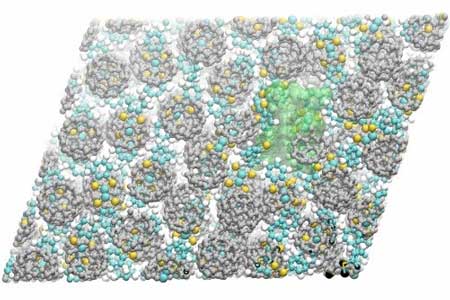| Posted: Apr 18, 2018 |
This 2-D nanosheet expands like a grow monster
(Nanowerk News) Grow Monsters. Expandable water toys. Whatever you call them, they’re plastic-like figurines that swell when placed in water.
|
|
New materials science research borrows from this concept; only instead of water, engineers discovered that tiny crystal lattices called “self-assembling molecular nanosheets” expand when exposed to light.
|
|
The advancement, described in the Proceedings of the National Academy of Sciences ("Light-induced dilation in nanosheets of charge-transfer complexes"), could form the backbone of new light-powered actuators, oscillators and other microscopic electronic components useful in the development of artificial muscles and other soft robotic systems.
|
 |
| The simulation shows molecules struck by light causing the 2-D nanosheet to expand. (Image: Richard Remsing, Temple University)
|
|
The work centers on a materials science concept known as photostriction, which means turning light directly into mechanical motion, says the study’s co-lead author Shenqiang Ren, a researcher at the University at Buffalo’s RENEW Institute, which works to solve complex environmental problems.
|
|
“We’re using light — anything from sunlight to a simple laser — to cause the two-dimensional nanosheet to expand at an incredibly fast rate,” he says.
|
|
How fast? Sub-milliseconds. The process is aided by the photostrictive effect, which essentially bypasses the need to create electricity to move something, says Ren, PhD, a professor in the Department of Mechanical and Aerospace Engineering in the UB School of Engineering and Applied Sciences.
|
|
The nanosheet — made of the molecular charge-transfer compound DBTTF and buckyball molecules) — can expand up to 5.7 percent of its original size, according to the study.
|
|
While that may not sound like much, consider this: a 200-pound man that expands 5.7 percent would need to add 11.4 pounds in less than a second to keep pace with the light-triggered nanosheet.
|
|
Expandable water toys grow much more than that, but they do not revert to their original size. By contrast, the nanosheet does, making it potentially very useful as a light-induced actuator in artificial muscles, which has applications in everything from medical devices to industrial robotics.
|

